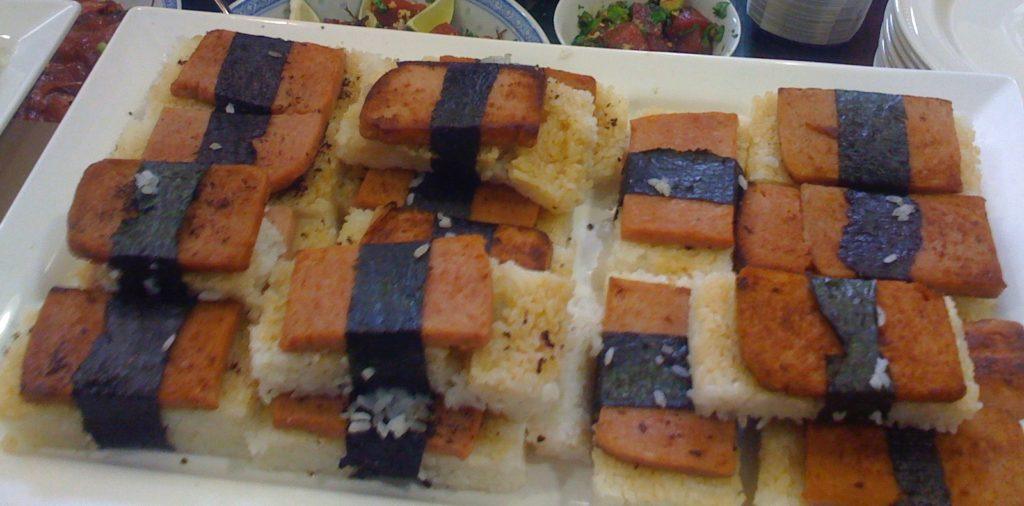If your first response is a big step backwards, as mine was, you need an authentic experience to understand it.
Mine came after standing in line for hours at the Edith Kanakaoli Stadium in Hilo, waiting for the doors to the ho’ike night of the Merrie Monarch Festival to open. After not eating for several hours, spam musubi, available at a counter right inside the stadium, was so very good. As we all know, hunger makes the best sauce; thank you, Billy Shakespeare.
There are two distinct versions, with many variations on the two themes. One looks like a giant nori sushi, with a thick slice of Spam secured to a rectangle of rice by a strip of nori. The other is more like a rice sandwich, with a slice of Spam between two rectangles of rice; the entire thing is then wrapped in a wide sheet of nori, not just a strip. The Spam is typically marinated or fried in Teriyaki or Yoshida sauce.
To make it at home, it is helpful to have a musubi mold. These plastic molds are inexpensive and can be found in Asian markets. There are four essential ingredients: Japanese medium grain rice (Nishiki brand is a good choice); Spam, sliced about 1/4-inch thick; nori seaweed; sauce. There may be other additions, such as toasted sesame seeds. Some people like to add rice vinegar to the rice, as well.
Rice is sticky and the best technique to keep it from sticking to your hands and to the musubi molds is to keep everything that will touch the rice moist with a spritz of water.
